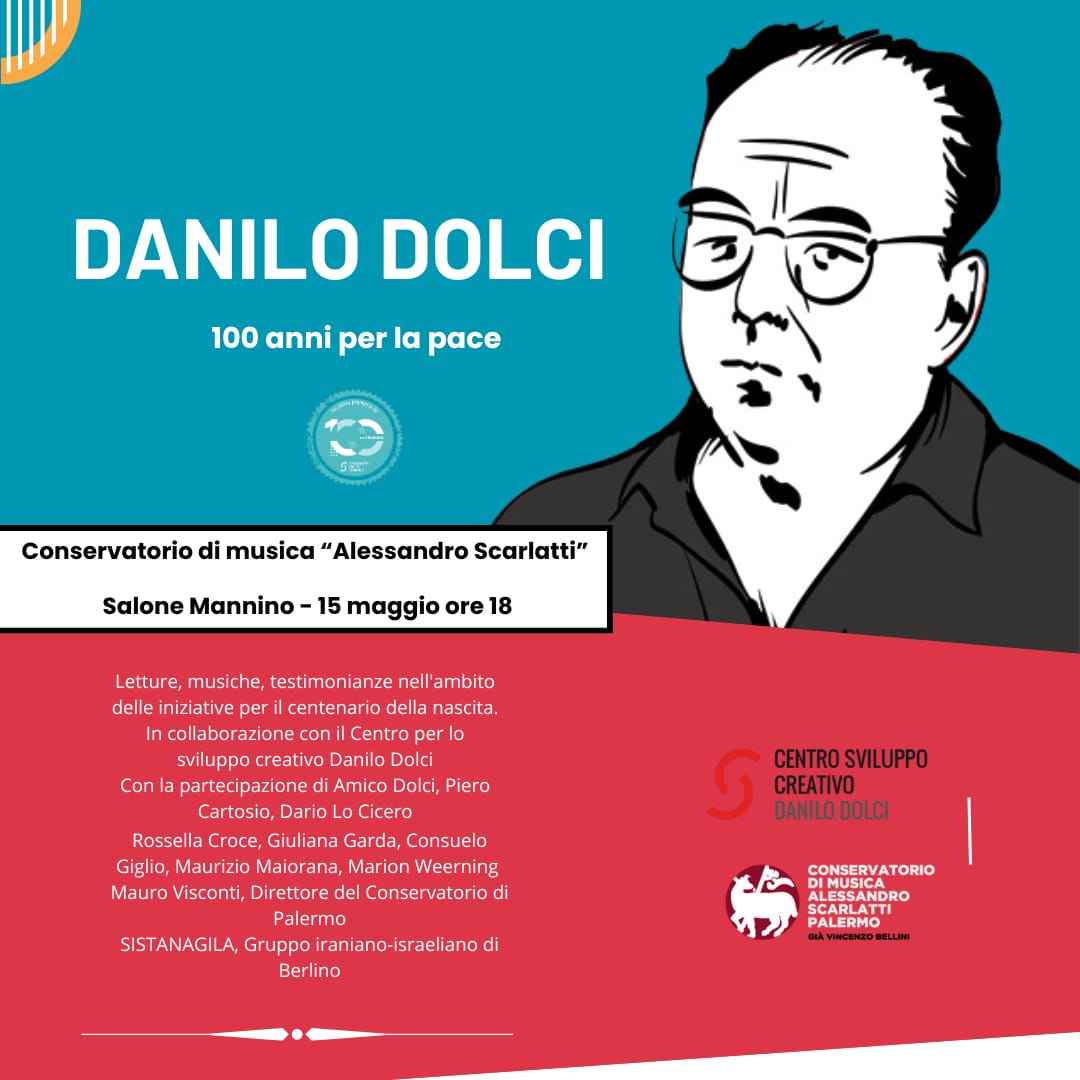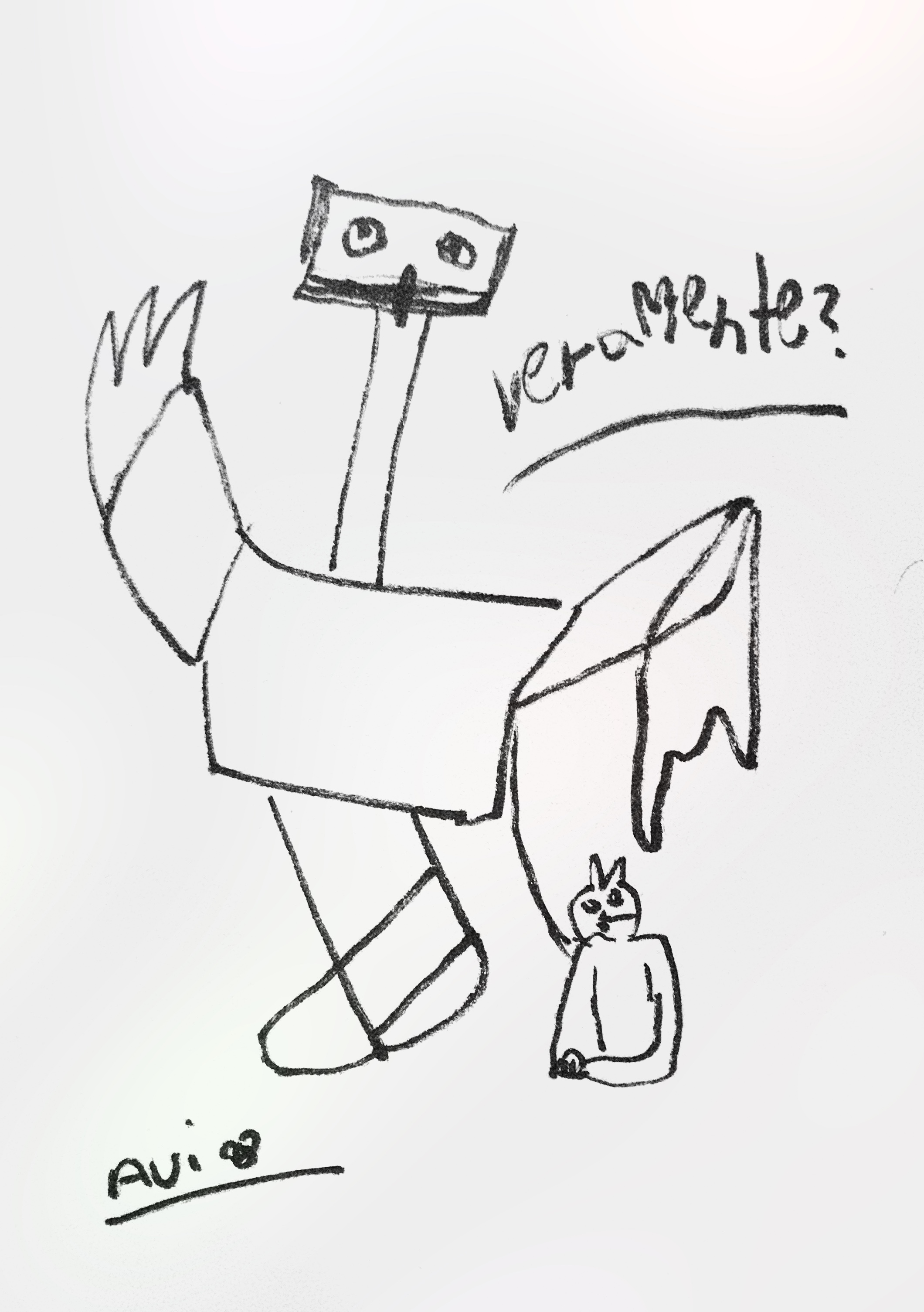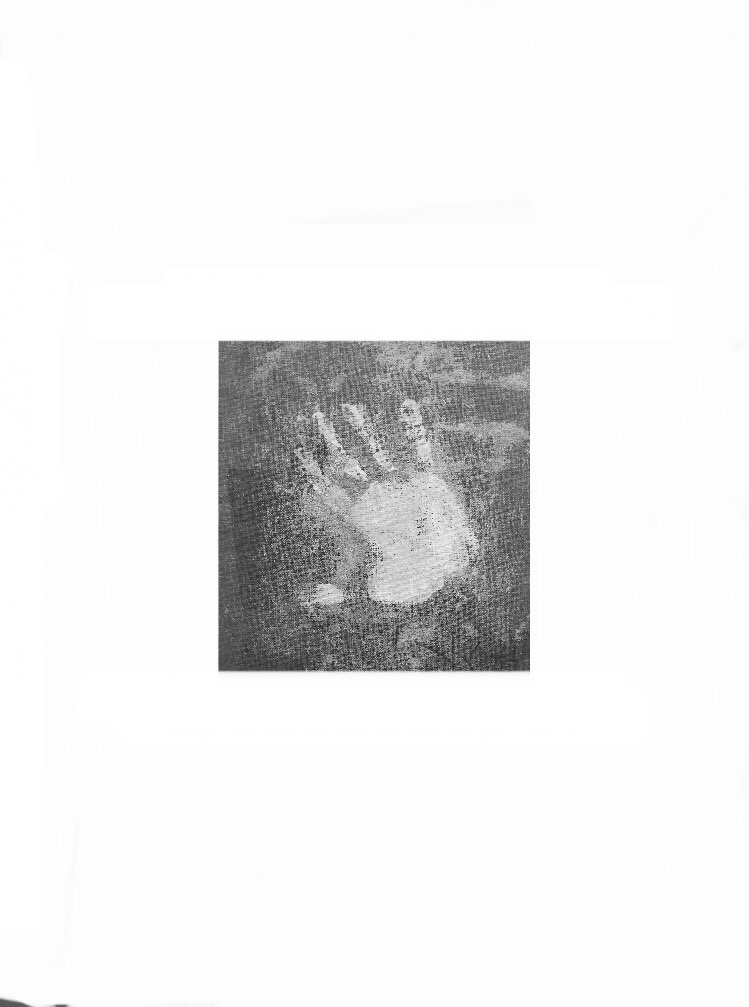+49 0157-5277-5203
A sense of Touch
Between Yoko Ono's work Touch and Avi Albers's work Touch
Yoko Ono and Avi Albers Ben Chamo both created works titled Touch, but they differ significantly in their conceptual approach, execution, and historical context. Ono's work focuses on conceptual, participatory art and overcoming social isolation, while Albers Ben Chamo uses the canvas to challenge traditional museum etiquette and foster intimate, tactile interaction.
The quest for connection and overcoming alienation
Both works are meant to create bridges between people and to elicit a strong emotional connection. Ono wanted people to touch each other physically to overcome emotional distance, and Albers Ben Chamo's work was a gesture of gratitude and a way to connect with people.
For both artists, the work is not a static object but a conceptual idea made real through experience. Ono's early Touch Poems were meant to be "read" by touch, and Albers Ben Chamo's canvas was first hung to be touched by people in the streets of Sicily.
In 2024, during a three-week residency in Palermo, Sicily, Albers was moved by the welcoming and emotionally expressive nature of the locals. Instead of painting on a canvas, he decided to turn the canvas into a participatory, anthropological mirror of his experience.
Albers began hanging blank, primed canvases on street walls, openly inviting passersby to touch them. This act subverted the traditional museum prohibition against touching art and recontextualized the artwork as a site for human interaction. The resulting impressions and marks left on the canvas became an intimate record of the encounters and connections Albers experienced with the Sicilian people.
Touch work is an anthropological study of human connection and cultural expression through tactile interaction. The project contrasts with the formal, reserved nature of museum-going, and instead focuses on the immediate, tangible human experience. The Sicilian people's willingness to engage with the canvas mirrors their culture of emotional openness and hospitality, which deeply affected Albers.
Albers later noted that when he exhibited the work in Germany, people were more hesitant and shy to interact with the canvas, highlighting a cultural contrast in attitudes towards public displays of emotion and physical interaction. (See the vandelized Touch in Berlin) Albers has described the work as a mirror for inner beauty and a means to bridge disagreements through the simple act of human contact. He was inspired by his ancestor, Rabbi Joseph Messas, who sought to connect with others across divides.
Lasting connection to Sicily
The Touch project has become a permanent part of Sicily's artistic landscape, solidifying the anthropological link between Albers' work and the people who inspired it. Touch 8 was acquired by the Museo San Rocco for Contemporary Art in Trapani, Sicily. The Seminary Priory of Erice also houses one of his Touch works (Touch no 1). The project demonstrates how art can serve as a medium for cross-cultural yconnection, communication, and the preservation of a moment of shared humanity.
What is peace Danilo Dulci
On the occasion of the presence in Palermo of the SISTANAGILA project, I was reading a text by Danilo Dulci "What is Peace" (1968) and a final note regarding the importance of keeping the legacy of Danilo alive. Sistanagila, which has been uniting Iranian and Israeli musicians in Berlin for ten years, and the Alessandro Scarlatti Conservatory in Palermo hosted a moment of readings, music and testimonies for the centenary of the birth of Danilo Dolci, an international symbol of the commitment to peace. The meeting to remember the Italian sociologist, poet, educator and activist of nonviolence, nicknamed Gandhi of Sicily, will see the participation of the teachers and the Director of the Conservatory M° Mauro Visconti. The very special relationship with music will be deepened at a later date, again in collaboration with the Danilo Dolci Center for Creative Development. Special thanks to Amico Dolci, Alberto Biondo, Babak Shafieian and Marion Weerning. Palermo, Sicily May, 2024

Recording Palermo
Palermo, 1st of Mai, noon time, all is alive, all is real and not perfect at all. Palermo reminds me what I have forgotten, the feeling of touch, touch of the heart. a quote from the Palermitani writer Roberto Alajmo will describe her and the search for peace better than me "Palermo Is an Onion. Like an onion, you can peel away Palermo’s countless layers without ever reaching its real core. As you try to peel it, it makes you cry. When you are done peeling it, it dissolves". Avi, May 2024

The art of touch
"The beginning
of all art
is touch."
Sophie Albers Ben Chamo
This statement encapsulates the essence of artist Avi Albers Ben Chamo's work. The first installation, "Touch "1" was first introduced this year in the San Rocco Museum of contemporary art in Sicily. "Touch "1" invites viewers to step into a dimly lit room filled with naked primed fabrics that beckon to be touched. As visitors tentatively reach out, they are enveloped in layers of textures – smooth touch, rough touch, cold touch – each evoking a different emotional response. The room pulsates with a holy energy, as if the very walls are alive with the vibrations of human connection. "I was searching for a way to create a space where touch becomes the language of the soul, where words are unnecessary, and emotions speak out loud." Albers Ben Chamo In a society increasingly dominated by screens and virtual interactions, Touch serves as a poignant reminder of the power of human touch to bridge divides and forge connections. The climax of the installation comes when two strangers, hesitant at first, tentatively reach out and grasp each other's hands. In that fleeting instant, a spark ignites between them, a silent understanding that transcends words. It is a moment of pure vulnerability and trust, a testament to the transformative potential, a permission to touch and to be touched. As the viewer stands there, hands intertwined, bathed in the white canvas, it becomes clear that Chamo's touch is not just about sensation, it is about the profound higher beauty of human connection.
Avi Albers Ben Chamo's touch is a representation of spirituality, primal sensuality, and sensory experience that challenges traditional artistic norms. Through this innovative approach, Chamo invites viewers to engage in a transformative journey that transcends the physical realm and delves into the depths of human consciousness. By intertwining touch with spiritual and primal elements, "Touch" creates a unique sensory experience that resonates on a profound emotional level. Despite potential skepticism, Chamo's work serves as a testament to the enduring power of touch as a medium for artistic expression and self - discovery.

TOCCA TOUCH
di Avi Albers Ben Chamo
per sentirci liberi di sperimentare, per avere il coraggio di aprire il nostro cuore a noi stessi e all'altro, abbiamo bisogno di sentirci protetti e al sicuro, e così Touch è anche un invito ad avere fiducia nello spazio protetto che il museo ci offre per poter fare le nostre esperienze;
Di Claudia Schönfelder-Trapani è una psicologa e psicoterapeuta di origine tedesca che esercita a Trapani, in Sicilia, Italia.
Museo San Rocco Trapani 23.11.2024
Buonasera! Grazie dell'invito, sono felice e onorata di essere qui con voi stasera in questo luogo che per me è uno spazio del cuore, uno spazio in cui mi sono sempre sentita accolta e in cui ho trovato nutrimento per lo spirito, e sono grata per l'opportunità di dare un piccolo contributo alla vita di questo spazio.
Dico subito che non sono un'esperta di arte. Come ha detto la prof. Weerning nella sua presentazione io faccio la psicoterapeuta, e sono abituata a osservare me stessa. Se voglio comprendere l'animo umano devo per prima comprendere me stessa, e questo è un oggetto di studio che ho sempre a portata di mano. Per cui stasera sono qui semplicemente per condividere con voi alcune delle riflessioni che l'opera Touch e una conversazione con l'artista mi ha sollecitato.
Concedetemi un momento di pignoleria linguistica. La parola inglese Touch può essere intesa sia come sostantivo, tradotto in italiano “tocco” , sia come verbo, all'infinito “toccare”, e nello specifico come imperativo, “tocca!”.
Io voglio cogliere questo titolo come invito da parte dell'artista, anzi recepisco tanti inviti diversi, e ciascuno di noi è libero di coglierli oppure no.
Eccovi un elenco (incompleto) degli inviti che io leggo nel titolo Touch:
• è un invito ad entrare in relazione: ogni tocco è una proposta di relazione, e Touch ci invita ad entrare in relazione, in un dialogo con l'opera, con l'artista, con noi stessi;
• è un invito ad accorciare le distanze: dobbiamo accorciare la distanza
tra noi e il quadro se lo vogliamo toccare; e accorciando la distanza tra noi e l'artista, siamo invitati ad assumere la sua posizione, il suo punto di vista, siamo invitati a metterci nei suoi panni, magari provare quello che prova lui davanti ad un telo bianco da “riempire”, forse eccitazione o gioia di fronte alle infinite possibilità oppure disagio o angoscia davanti all'incertezza;
• è un invito a entrare in relazione con il telo usando il senso tattile, il
primo dei nostri sensi che si è sviluppato dopo poche settimane mentre stavamo ancora nel grembo materno; è attraverso il senso tattile, i 5 milioni di ricettori distribuiti sulla superficie della pelle, che ci giungono le prime informazioni non soltanto sul mondo, ma anche su noi stessi: informazioni sulla temperature e consistenza del mondo esterno che
sono al contempo anche informazioni sui confini del nostro corpo, sul suo peso, la sua consistenza, sulla sua posizione nello spazio; è tramite il tatto, il con-tatto che si sviluppa in noi una immagine corporea, avviene una prima differenziazione tra noi e il mondo e si forma un primo senso di identità, ancora soltanto corporea;
• Touch è un invito ad un tocco attivo, un tocco che richiede un
movimento e in particolare l'uso della mano (questa forma specifica del senso tattile viene chiamata anche aptica), un tocco che va verso il mondo, lo esplora, lo scopre, lo afferra; noi nasciamo già con il riflesso di prensione palmare, e non a caso la più grande densità di ricettori tattili si trova sulle punte delle dita e sulle labbra;
•
• per cui è un invito ad un contatto diretto con la realtà, un invito a
“toccarla con mano”; per cui è anche un invito a uscire dai nostri schemi percettivi e interpretativi abituali che filtrano le nostre percezioni e condizionano il nostro approccio al mondo; siamo invitati ad una percezione diretta, non filtrata, inusuale, siamo invitati a lasciarci stupire come un bambino che sta scoprendo le meraviglie del mondo;
• è un invito a trasgredire le regole: quante volte sentiamo dire ai
genitori (o abbiamo detto noi ai nostri figli) “non si tocca!”; e, ovviamente, guai a toccare un quadro in un museo! I quadri si guardano, ma non si toccano; per cui Touch può essere un'opportunità per rompere dei tabù, per diventare consapevoli di queste regole, per lo più inconsce, che condizionano il nostro comportamento; a questo proposito l'artista ha raccontato un fatto interessante, divertente: il quadro è stato esposto in diversi paesi, e lui ha osservato delle diversità nell'approccio all'opera che variano in base alle differenze culturali: in Italia la gente si avvicina e tocca con molta più disinvoltura e rapidità mentre in Germania le persone sono più lente e sembrano dover superare più inibizioni; poi noi siamo tutti reduci del periodo Covid in cui le regola del non toccare ha assunto delle connotazioni nuove e spaventose a dimensioni planetarie, e sono convinta che questa esperienza ha lasciato delle tracce che ancora adesso segnano il nostro inconscio, collettivo e individuale;
• è un invito a sperimentare, ad usare l'opera come specchio, ad
osservare le nostre reazioni davanti alla possibilità di toccare un telo bianco, a livello fisico, emotivo, mentale e spirituale; perché la percezione sensoriale inevitabilmente attiva la “memoria tattile”, attiva connessioni proprio a livello neuronale con esperienze passate, evoca emozioni, sollecita associazioni, stimola fantasie; il tocco può essere vissuto in tanti modi diversi, può rassicurare, supportare, accarezzare,
può rafforzare un legame, guarire; ma può anche invadere, offendere, ferire, violare dei confini e suscitare paure profonde; possiamo desiderare e temere di toccare e essere toccati; (o come mi ha detto l'artista: il tocco può essere sacro oppure osceno); per cui Touch è anche un invito ad aprirci alle nostre emozioni e a lasciarci toccare a nostra volta; (allo stesso tempo la capacità di percepire, sentire noi stessi è anche la condizione per l'empatia, cioè la capacità di sentire l'altro): e a proposito di quello che abbiamo detto prima sulle conseguenze del periodo Covid ci possiamo chiedere: che effetto mi fa toccare un oggetto sapendo che è stato toccato da centinaia, forse migliaia di persone?
• per sentirci liberi di sperimentare, per avere il coraggio di aprire il nostro cuore a noi stessi e all'altro, abbiamo bisogno di sentirci protetti e al sicuro, e così Touch è anche un invito ad avere fiducia nello spazio protetto che il museo ci offre per poter fare le nostre esperienze;
• Touch è un invito alla presenza, ad essere presenti a noi stessi, a quello che noi siamo, presenti a tutto ciò che proviamo nel momento esatto in cui lo proviamo;
• e infine, il telo bianco per me è un invito a fermarci, a stare in silenzio, in meditazione; è un invito ad entrare nello spazio sacro del vuoto dove non c'è niente ma dove tutto ha origine.
Vorrei concludere con le parole di Novalis, poeta, teologo e scrittore del romanticismo tedesco. Novalis dice: “Lì dove si toccano mondo interiore e mondo esterno è la sede dell'anima.”
Claudia Schönfelder-Trapani è una psicologa e psicoterapeuta di origine tedesca che esercita a Trapani, in Sicilia, Italia.
